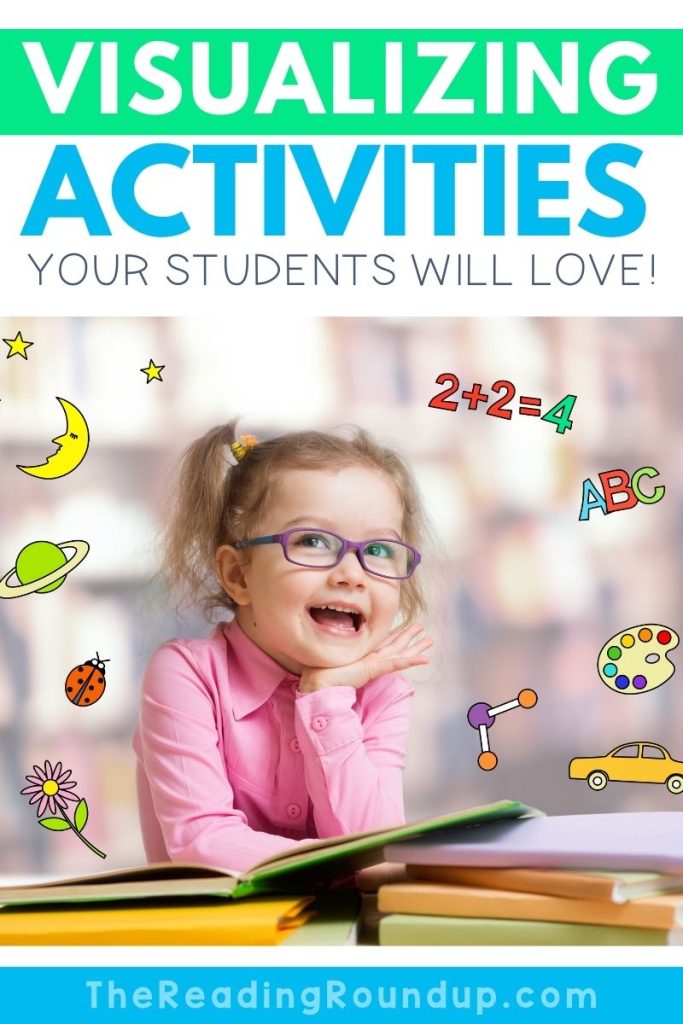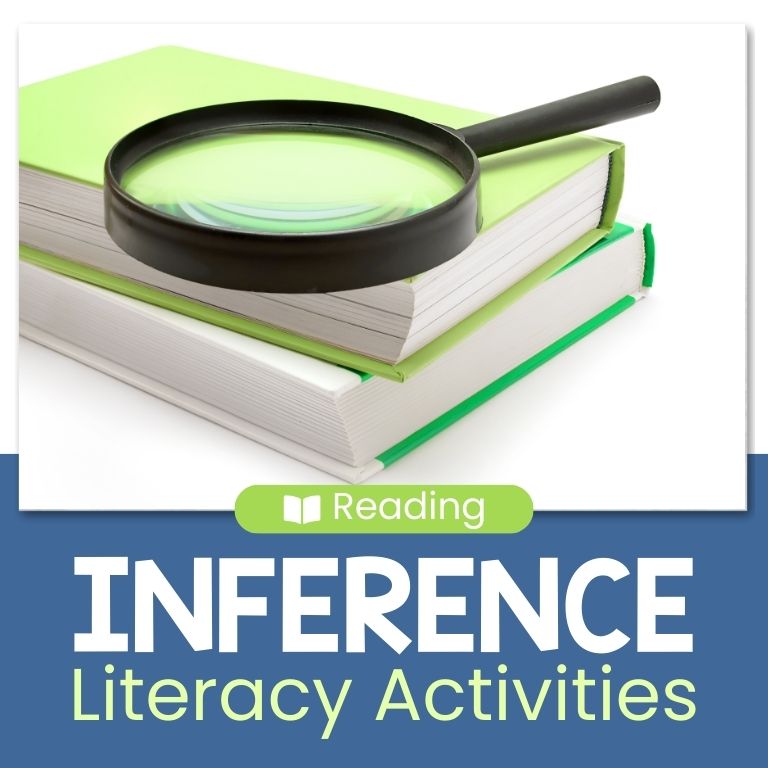
Visualizing in reading is something many of us skilled readers naturally do. As a result, we may not spend as much time working on this skill with students. Let’s explore why we need to explicitly teach the visualizing strategy for reading comprehension and ways we can implement it with our elementary students.
What is Visualizing in Reading?

When we visualize as we read, it helps us to create a movie in our mind. This brings the story and the characters to life, which makes reading engaging and enjoyable.
This post includes affiliate links for which I may make a small commission at no extra cost to you should you make a purchase.
Why is Visualizing Important in Reading?
Visualizing while reading is a skill that expert readers naturally implement, we need to explicitly teach young learners the visualizing strategy for reading comprehension. Visualizing while reading allows us to:
- Personalize the story based on our background knowledge
- Emotionally connect with the characters
- Understand the impact of setting on the story
- Notice and remember details
- Clarify and enhance understanding
- Draw conclusions and have our own unique interpretations
- Engage deeply with the text
Whole Group Visualizing Activities
When teaching any new strategy, such as the visualizing strategy for reading comprehension, it requires a lot of teacher modeling. Through your read-alouds you can show students how to make a movie in their mind and point out the details which helped you create these mental images.
Using Read Alouds to Visualize
Draw to Respond – During read alouds, students can draw the most important events from the beginning, middle, and end of the story. You may want to scaffold the activity with a graphic organizer.

Characters – Read character descriptions without showing the picture. Compare students’ drawings and discuss why the author described the character in a certain way.

Imagine the Setting – Students can draw what they visualize as you read aloud part of a text that describes the setting without showing the illustrations. Discuss how our background knowledge helps us visualize and add details that weren’t explicitly stated.
Compare Images – Compare students’ mental images with one another or to the illustrations in the story. Students may identify details that they missed or how their background knowledge impacted their mental images. A fun way to do this is with a gallery walk, where students place their drawings on their desks and quietly walk around looking at each other’s work.
Visualizing Poems
Poems can be complex for young readers to understand. But visualizing while reading poems can make them more accessible. Many poems include descriptive writing and sensory words that work perfectly for visualizing.
Small Group Visualizing Activities
Students will need plenty of opportunities to practice visualizing in reading. They can complete many of the same whole group activities during centers or try some of these partner activities together.
Guess Who Game
During literacy centers, students can play Guess Who together. This allows them to practice ways that authors may describe characters. Students can record descriptions in their writing journal to add to their stories.
Students can also create their own game cards. They can draw their own characters and settings on blank index cards to have a partner guess similar to Guess Who.

Setting Scenarios
Provide students with different settings (e.g., a forest, a city street, a beach) and ask them to imagine a scene taking place in that setting. Students can take turns describing their visualizations to each other and discussing how the setting influences the story.
Silly Scenarios
Come up with silly scenarios for students to visualize together.

- A dinosaur family going to the beach
- A Superhero Banana saving fruits from the Vegetable Villains
- A pirate cat searching for the world’s biggest ball of yarn
Story Starters
Make cards with story starters that describe different characters or settings (“A character who..” or “A setting that…”). Students can take turns visualizing the particular characters/setting and discuss a possible story that could take place. They’ll realize they may come up with different images based on their background knowledge.
- A character who doesn’t fit in…
- A character who is silly…
- A setting that is spooky…
- A setting that is magical…
Cross-Curricular Visualizing Activities
Visualizing is not just a reading strategy. Students can visualize across different subject areas to gain a deeper understanding of the content.
Visualizing in Math
Students can visualize word problems to understand what it is asking and which strategies to implement. Students can draw the scenarios in a word problem, visualize data in graphs, or draw how fractions represent parts of a whole.


Visualizing in Social Studies & Science
During science experiments, students can visualize possible outcomes and write their predictions. In Social Studies, visualizing major historical events (including the physical elements, barriers, and weather that impacted the event) gives students a better understanding of what happened. Visualizing can also be helpful in Geography to picture what other places may look like.
Teacher Tips for Visualizing
This skill will require teacher modeling and opportunities for practice. Make sure to point out the specific words and phrases which helped you visualize.
Visualizing is an easy skill to help students see the connection between reading and writing. Show how authors use descriptive words to help readers visualize and encourage students to begin adding similar descriptive words to their own stories.
When a student isn’t sure what to write, it can help them to draw their story. Making a storyboard with the setting, characters, and beginning, middle, & end of their story will make it easier for them to write.
Visualizing Resources
You may want to check out these visualizing reading strategy teacher tips and tools or these resources for additional ideas on teaching visualizing in reading:

WANT TO PIN THIS FOR LATER?
















